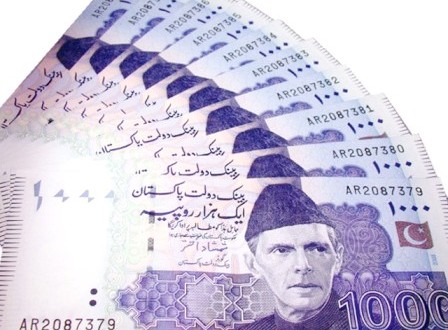According to a Bloomberg report, the government and the State Bank of Pakistan are intervening to keep the Pakistani rupee stable at its current level. Although both the government and central bank have outrightly denied of manipulating with the currency and intervening in the market. The report also cited that banks refuse to trade the rupee above 104.87 rupees a dollar and anyone trying to trade above this said value will receive a phone call from the State Bank of Pakistan (SBP) within no time, according to sources who refused to be named.
The Bloomberg report stated that Pakistan is the 2nd largest economy in South Asia, yet the ballooning current account deficit which reached $7.3b in the period from July-April 2016-17 and the corresponding fall in foreign exchange reserves amounting to around 15pc makes the country look very vulnerable. The report also shed light on the fact that despite the claims of the central bank of the rupee being a free floating currency which moves on normal demand and supply pressures and among a basket of 13 currencies compiled by Bloomberg, the rupee remained the only currency to appreciate against the dollar by 0.5pc since April 2014.
It was also cited in the report that any depreciation of the Pak rupee will exacerbate payment issues related to the China-Pakistan Economic Corridor (CPEC) under which extensive foreign currency loans have been granted to Pakistan. The depreciation of the rupee will make it unsustainable for the country to meet its debt obligation in respect to foreign loans taken under the CPEC corridor, said Bloomberg’s report.
The report also mentioned that Rs232m worth of stocks have been sold by foreign investors in the Pakistan Stock Exchange (PSX) considering it has been recently reclassified from frontier to emerging market by MSCI. In April, Pakistan recorded its ever lowest trade gap which expanded to $3.2b. State Bank of Pakistan (SBP) introduced South Asia’s first monetary policy committee during the tenure of previous governor Ashraf Wathra but even that hasn’t removed doubts over the regulator’s independence.




